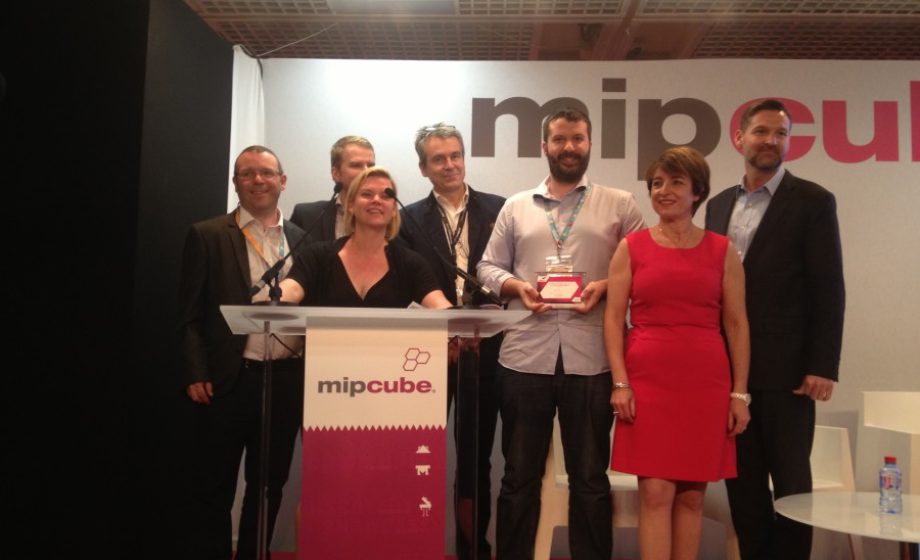
TVTY beat out a impressive group of finalists to be crowned the winner of the annual MIPCube Lab Competition, the one and only B2B startup competition for tech companies offering television and online video solutions. Having only just launched last September, TVTY impressed the group of top industry judges with their solid use case, sound business model, and already impressive client and partner roster which includes likes of Microsoft, Renault, McDonalds, and Lagadere.
Following their big win, I had the opportunity to chat with TVTY’s cofounder, Eliott Reilhac who talked me through how TVTY works and their plans to take the US by storm.
How did TVTY get started?
The company behind TVTY was called Distribeo which I cofounded in 2009. We started by developing mobile apps and we had a project which was to develop a second screen mobile app, so that’s when we built the tech that’s behind TVTY today. In fact, we saw the opportunity of doing what we do today because the market asked us for it. So, one of our partners asked us if we could do what we do with TVTY today and said sure why not. From there, we redirected towards what TVTY is now and launched in September 2013.
You have a very impressive and long list of clients. How did you get some many clients so quickly?
This because we have an indirect sales approach which means that we work with the trading desks and ad networks already working with these clients and media agencies. So this basically multiplies our own strength by 100. We earn less money than by selling directly, but this helps us go much faster.
Explain to me exactly how TVTY works and what you’re doing?
The first step is to be able to understand what TV ad is playing on TV in real-time. In order to do so we plugged-in the live feed of different TV channels into our platform in a data center dedicated to that. Our servers analyze in real-time all the images that are going through the live TV feeds and we process all these images and compare them with all the images we have in our database. This database is of every TV ad that has appeared on TV at least once. As soon as we see a match between the two we can say, ‘hey’ this is an ad for a certain brand. So this is the first step of the process…it seems simple when you hear it, but in fact it’s not. It takes a lot of servers and analysis (to get the results we generate).
In addition, new ads are launching all the time that we need to add to the database. So, in France alone, we need to index 30-50 new TV ads coming on the market. When the new ad comes onto the market, we index and then we have one or more members of the team to watch the video and tag what brand it is.
Is there anyway to automate this tagging process or do you think it will always require a human being?
You will always need a human being to check. And, in fact, automating it today would be more expensive than doing it the way we’re doing it currently. In fact, the human aspect is actually quite fast. I think the tech that recognizes in real-time what the brand it is and what they’re communicating in the ad, would be extremely challenging to do.
What is the next part of the process?
The next step is to connect with the DSPs and ad servers that serve the ads. So we connect to them through their APIs or through our internal API. We then send a trigger detect a spot of interest to activate a campaign (across other devices/platforms).
So if I’m your client, how do I interact with your platform?
Our typical client would be an ad network selling campaigns to media agencies. The way they sell it is to attempt to sell a unified campaign that includes some TV budget. The ad network then would go on to our SaaS platform and enter, for example, that they want the ad to be broadcast on Liverail, AppNexus, Twitter and Facebook. They then select the tools they want. Once they do that they will create the campaigns and give those ideas to our platform so it understands how to activate and deactivate campaigns.
So TVTY is a CPM model correct?
They will pay a CPM model based on the format they’re selling. Basically it’s kind of like a revenue share model where we’d take 5-10% of what is generated.
In your presentation you spoke about expanding to the US. Can you tell me more about that?
We’re in the final stages of raising a Series A to support our expansion to the US (after having raised a seed round previously with Partech). So end of Q2, I’m planning to launch the business there, targeting the ad networks.
What do you think the biggest challenges for you are in the US-market?
Firstly, there is the technical and human challenge. There are a lot of TV networks there. The US is like several countries in one. This results in all these regional ads which means that one TV network could become in our system 10-20 TV networks, because, in fact, I need to monitor each and every format in order to know what ads are airing regionally.
The second thing is being French in the US, arriving there and meeting the right people, getting the right contacts and networks. This will be a challenge. But I’m sure I can leverage some of the contacts I already have there. I am going to have to take my bag and meet everyone there, literally go door-to-door. But I know that I can do it.

